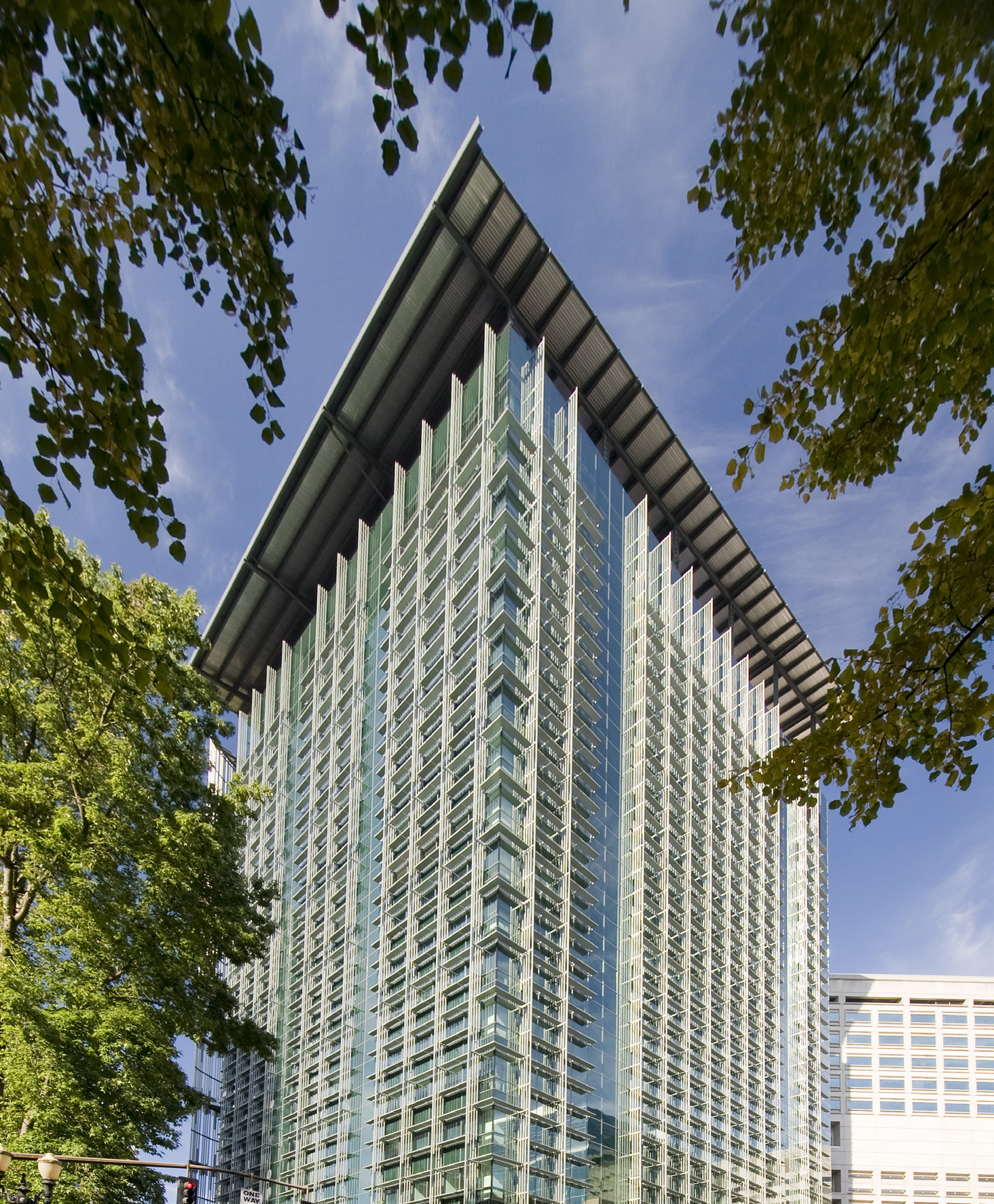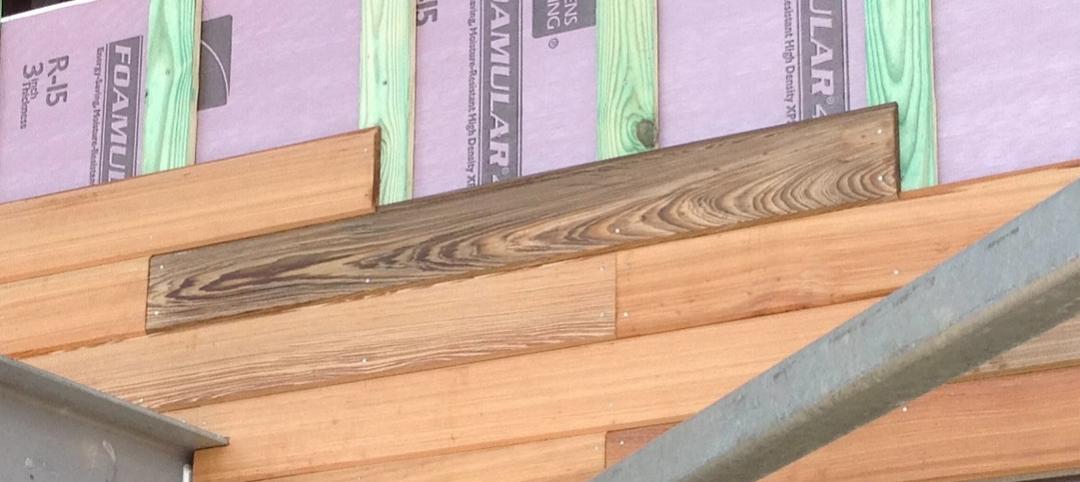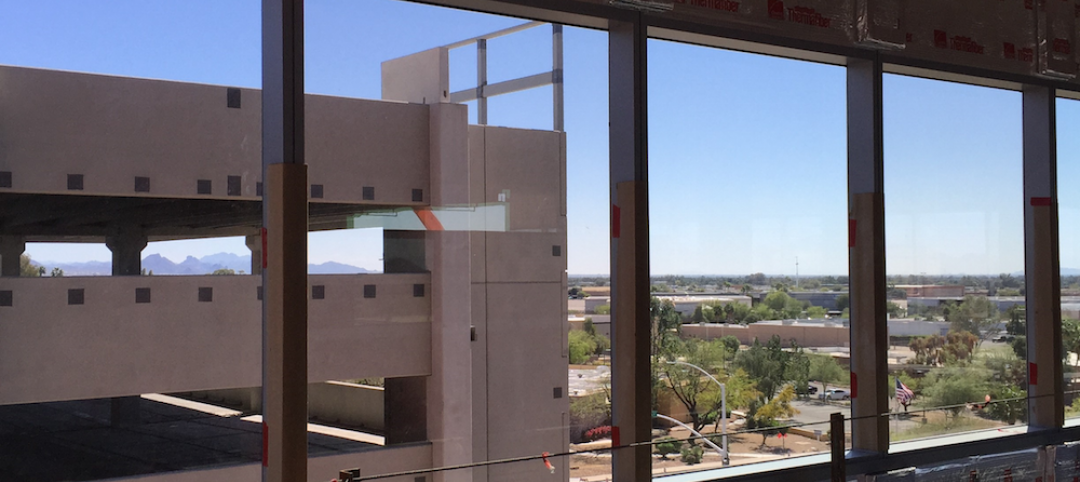Building enclosures have evolved drastically in the modern age. Previously designing a building enclosure meant solid load-bearing walls of masonry between interior spaces and the unrelenting outdoors. Now, specification involves interactive layers and components of varying materials that enclose but are separate from the building’s structure. Each layer serves a function, as barriers against moisture, fire, thermal conductivity, air leakage, and more. And the advent of increasingly stringent building codes and energy efficiency standards presents a need for AEC teams to craft their projects ever more carefully in order to meet heightened performance expectations and deliver buildings on time and on budget.
“As a result, specifying and detailing state-of-the-art building enclosure systems often involves a time-consuming, multi-disciplinary approach,” says chief architect Herbert Slone, senior manager of commercial building systems for Owens Corning. “The building envelope functions as a critical layer of protection designed to be energy efficient, fire resistant, and to prevent moisture from accumulating and damaging the building.”
Architects have multiple factors to consider when specifying their building enclosures, and approaches to performance and code compliance vary. According to national energy performance standards like ASHRAE Standard 90.1, projects can utilize prescriptive packages that list minimum requirements for each building component; “trade off” decreased energy efficiency for a given component for other enhanced ones; or compare designs against established performance baselines. The best approach for each project ultimately depends “on the complexity or uniqueness of the building, and the amount of time and money available for demonstrating compliance.”[1]
Standards and testing that AEC teams must comply with include ASTM E2357 (Air Leakage), ASTM E331 (Water Penetration), ASTM E119 (Fire Resistance), and NFPA 285 (Fire Propagation). Specifying building enclosures that ensure all these requirements are met can be difficult with the vast array of component products available, says Slone, and there is growing interest in comprehensive solutions that streamline the design process for architects.
Protecting building occupants against the exterior environment will vary widely in form. Projects in the desert of the southwestern United States will have different sub-assembly performance needs than those along the Atlantic Ocean. Interior environments will also have an effect on the success of the building enclosure, as there may be microclimates present such as hotel swimming pools, or data center rooms, etc.[2]
Choosing building enclosure systems is a critical task for everyone on the Building Team. Says Slone: “If the products are chosen or composed incorrectly, it can compromise the integrity of the building and lead to significant complications for the building occupants and owners.”
References
1 https://www.energycodes.gov/sites/default/files/documents/co_edition_commercial.pdf
2 http://buildingscience.com/documents/digests/bsd-018-the-building-enclosure_revised
Related Stories
Cladding and Facade Systems | Jun 5, 2023
27 important questions about façade leakage
Walter P Moore’s Darek Brandt discusses the key questions building owners and property managers should be asking to determine the health of their building's façade.
Sponsored | Building Enclosure Systems | May 16, 2023
4 steps to a better building enclosure
Dividing the outside environment from the interior, the building enclosure is one of the most important parts of the structure. The enclosure not only defines the building’s aesthetic, but also protects occupants from the elements and facilitates a comfortable, controlled climate. With dozens of components comprising the exterior assemblies, from foundation to cladding to roof, figuring out which concerns to address first can be daunting.
75 Top Building Products | Dec 16, 2019
Top Glass and Glazing Products for 2019
SageGlass's Harmony dynamic glass and Vitro Architectural Glass's Acuity low-iron glass are among the nine new glass and glazing products to make Building Design+Construction's 2019 101 Top Products report.
Sponsored | | Apr 26, 2018
Designing for Fire Safety and Resistance Remains Key For Healthcare Building Enclosures
Today’s insulation products are expanding beyond simple thermal insulation properties to offer fire resistance and firestopping properties.
Sponsored | | Feb 28, 2018
Quality Products Needed To Meet Green Building Standards Today
Sustainable healthcare facilities will need energy-efficient building enclosures from the outset.
Sponsored | | Jan 16, 2018
Healthcare Facilities Present Unique Building Design Concerns
With longevity, air quality, patient outcomes, and wellness in mind, AEC teams want to make sure they’re choosing the best building design products
Sponsored | | Dec 28, 2016
The Evolution of Sustainability and Product Transparency in Building Science
Sustainability now a core business strategy for manufacturers and AEC firms alike
Sponsored | | Nov 15, 2016
Helping to Protect the Perimeter Proactively
Incorporating more fire containment tactics to building enclosures benefits both architects and end user occupants alike













